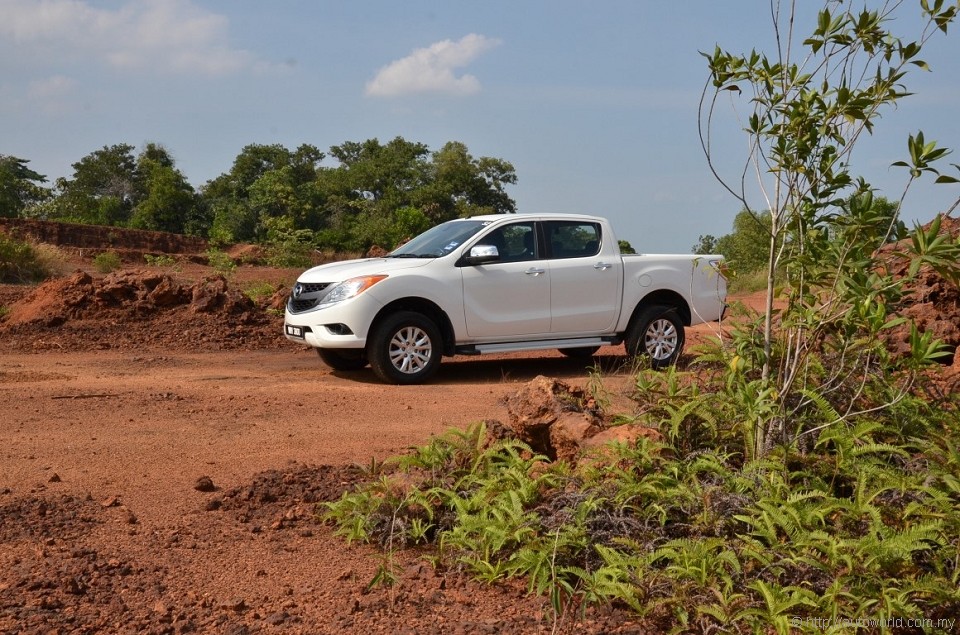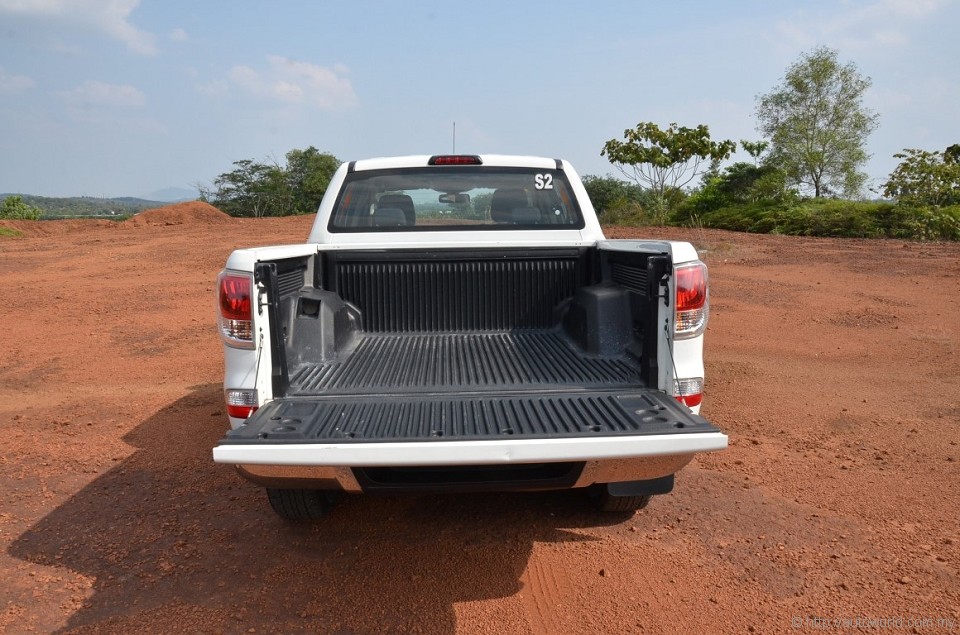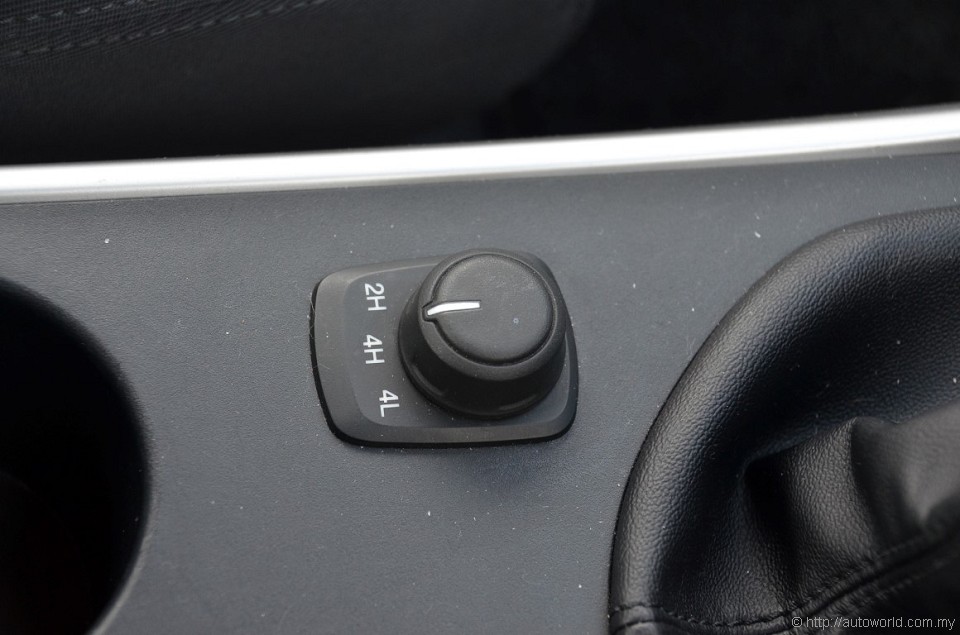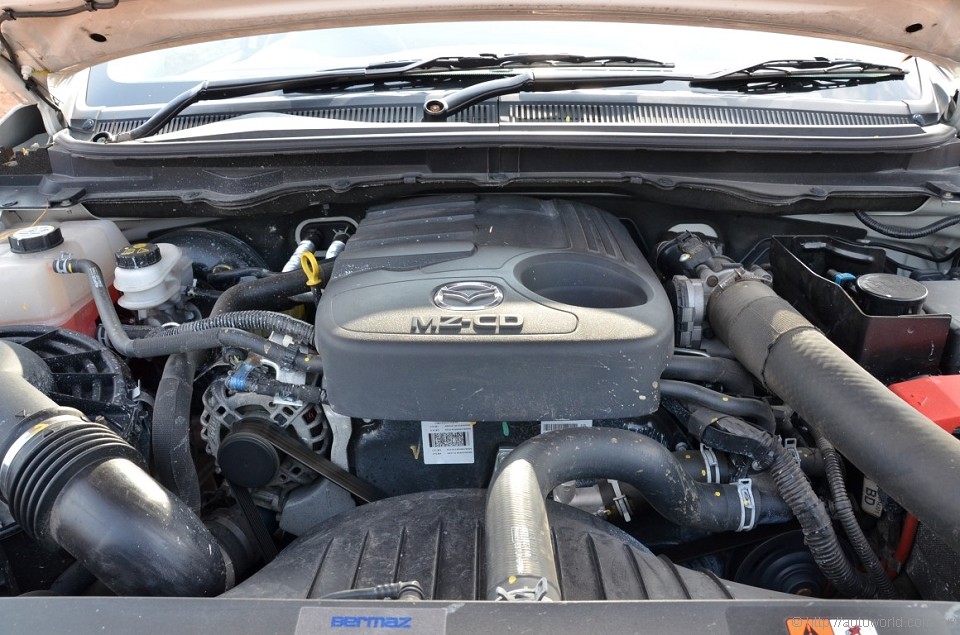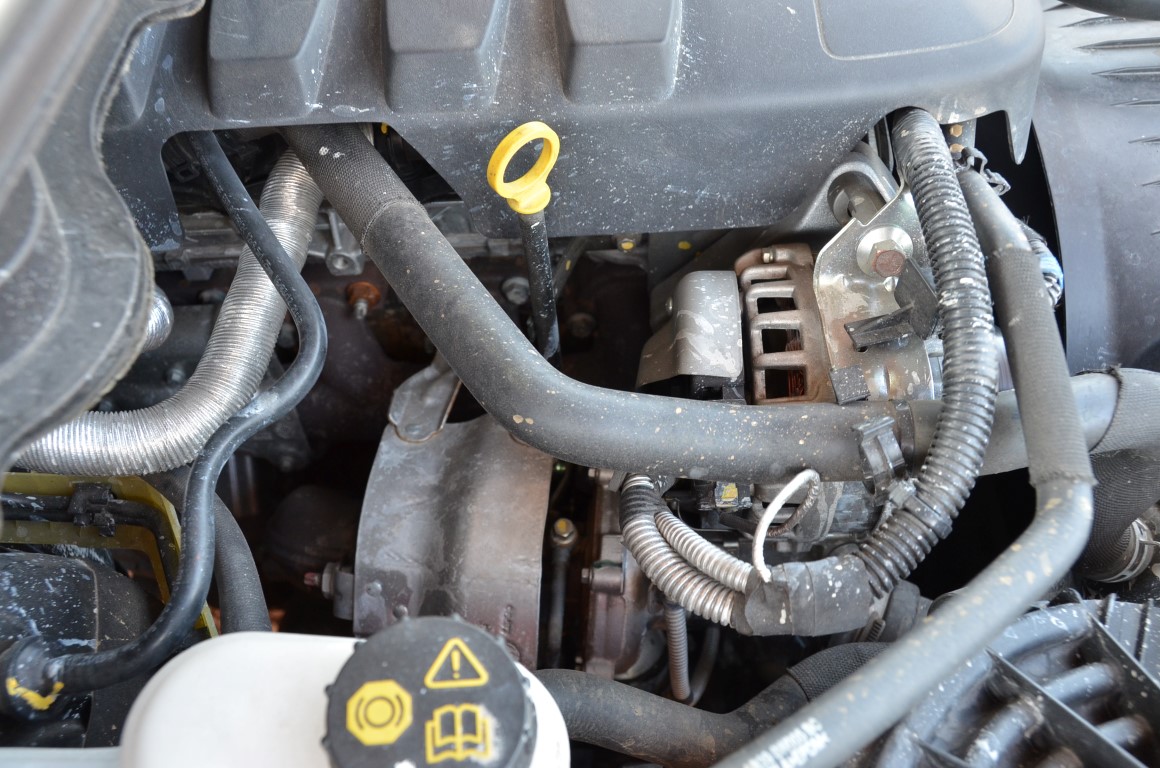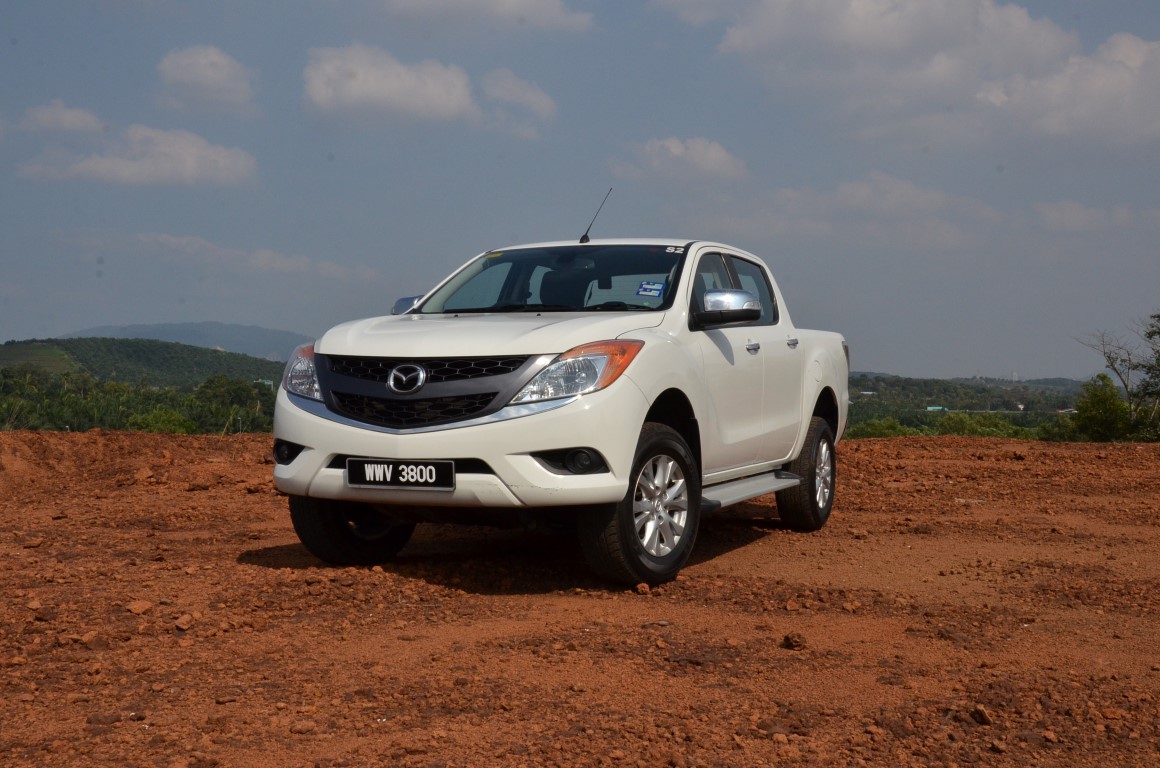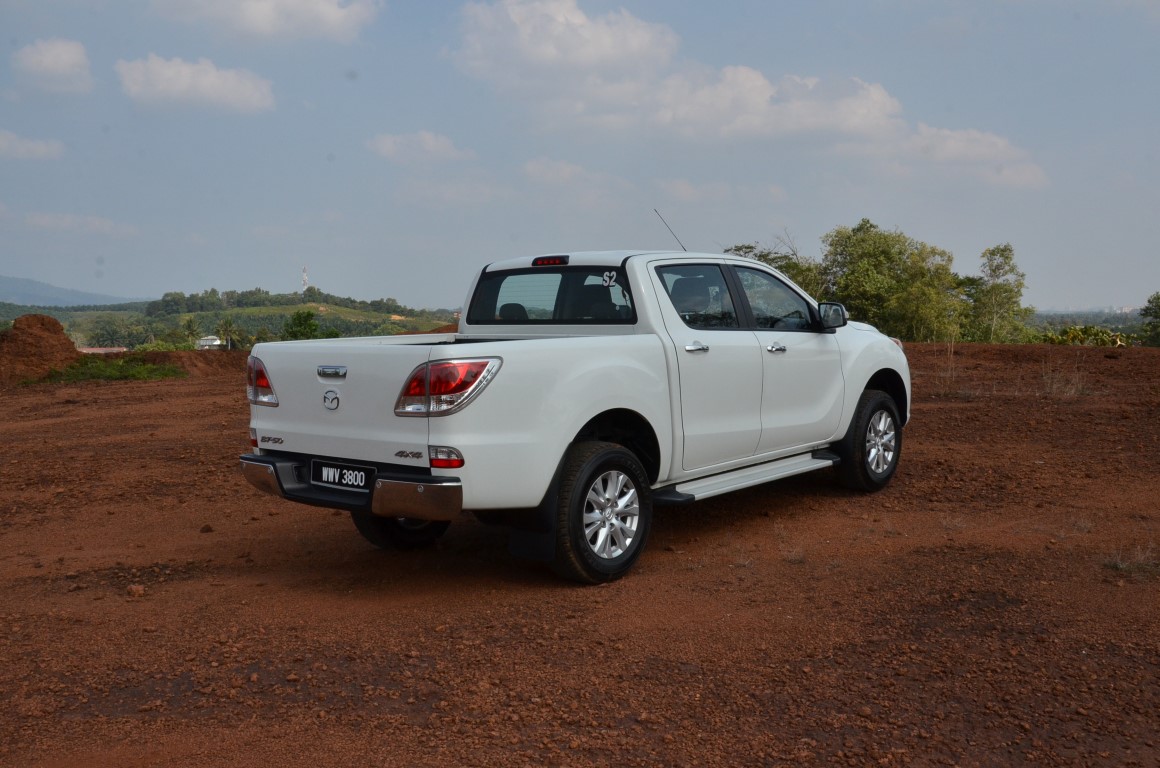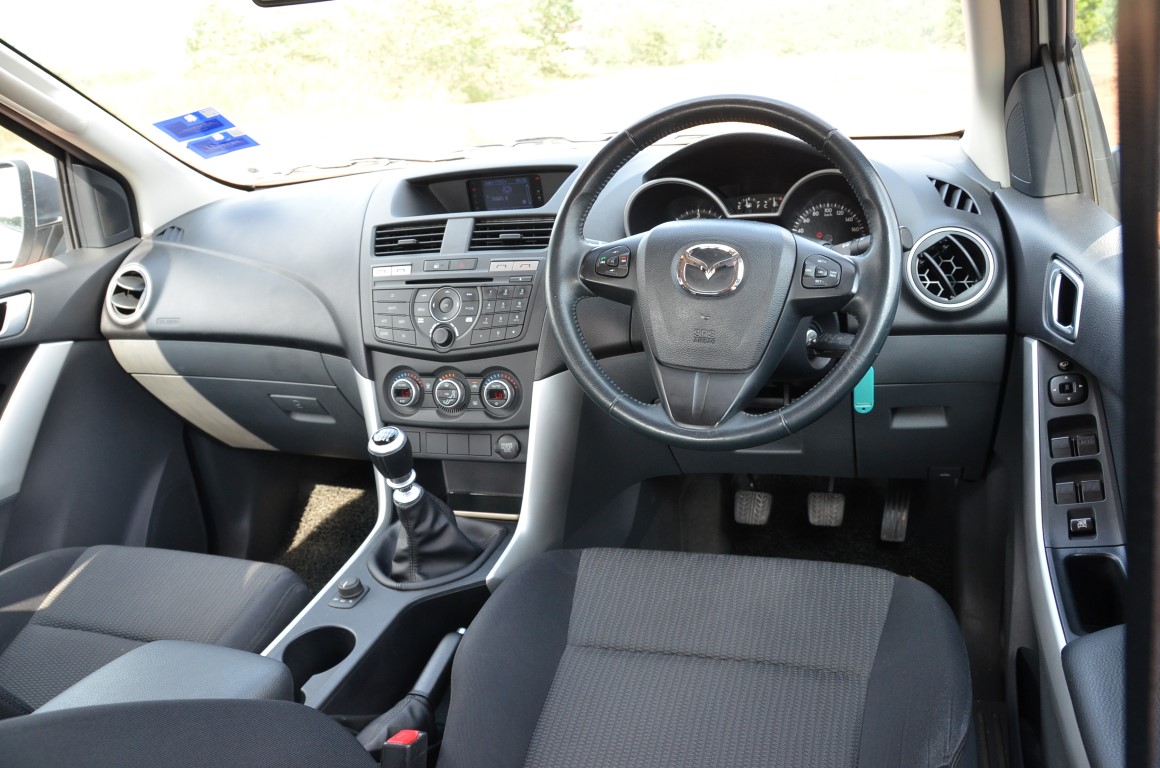Mazda BT-50 – Alternative to the Ford Ranger
For the past year of so following the launch of the new Ford Ranger, there has been a lot of excitement in the 4 by 4 enthusiast market, with brisk sales, and a very long waiting list. However, there is an alternative buy for the Ford Ranger, and this is in the shape of the Mazda BT50, which the local distributors, Bermaz Motor, has been quietly selling for the same period.
Built at the very same plant in Rayong Thailand, the Mazda BT-50 shares the engine, transmission, and chassis of the Ford Ranger, and even the body is the same, save for some cosmetic changes. As a result of these cosmetic changes, the Mazda BT-50 looks different – the front mask is more Mazda, with its familiar smiling face motif, and the rear tail lights are of a different shape. The doors are the same size, and are shaped a little differently, and there are different accentuating lines along the sides.
The public are divided about how the BT-50 looks. Some say it is nicer than the Ford Ranger, while others may tend to disagree. Whatever it is, the Mazda BT-50 is there, and if you like it, you can have it, although you should be forewarned both models come from the same factory, so ready stocks may be an issue too at Bermaz. My sources say that the BT50’s that manage to make their way here are also snapped up even before they arrive.
There are two diesel engine variants available for the Mazda BT-50 – a 2.2 litre, and the 3.2 litre. The 2.2 litre model comes in two manual variants, and one automatic, while the 3.2 litre model is only available as an automatic. For the 2.2 litre manual, there is a base model meant mainly for commercial applications, and therefore priced lower, and a high-spec model for the lifestyle user. The test vehicle given to me by Bermaz was the Mazda BT-50 2.2, high spec model, with a manual transmission.
Basically the mid-spec is the same vehicle, except that it would come with steel rims, no audio system with voice command and Bluetooth and no leather-wrapped steering.
Since the Mazda BT-50 in 2.2 litre form is also available with an automatic transmission, the question here really is whether one should pick the manual or the automatic variant. Personally, I have yet to drive the automatic version, but since I have driven the Ford Ranger equivalent, I would suppose that that would make a useful comparison.
Firstly, as with all manuals when compared to an automatic of the same capacity and vehicle type, power delivery through the manual transmission is mechanically more efficient; there is no transmission loss due to transmission slip. As a result, acceleration is improved over that of an auto transmission. Translated to the road, the manual transmission is more fun to drive on the open road, and if you are a driving enthusiast, you will feel more in control. Such was the exact feeling I got with the Mazda BT-50, and the fact that I have not driven a manual car for many months now just added to the pleasure. Jumping from the automatic 2.2 litre Ford Ranger to the Mazda BT-50, I can feel the difference immediately.
Of course, the merits of an automatic cannot be denied, so whether you pick an auto or manual would depend on your usage pattern. Those who are considering the BT-50 as a daily driver might want to pick an automatic transmission instead. A little compromise in the power department is hugely compensated by the convenience of an automatic when you are stuck in traffic. Having driven automatic cars almost exclusively for a number of years now, I enjoy driving a manual every once in a while, but for the Mazda BT-50, I admittedly selected a test route that took me away from the city so that I would be less likely to be stuck in any heavy traffic. Having said that, I have, through many years of sticking faithfully of manuals, developed a method of driving a manual in a traffic jam, but that’s another story.
Secondly, the fuel consumption is about 20 percent better from the Mazda BT-50 manual compared to my automatic Ford Ranger. For the first time in a pick-up that weighs in at close to two tons, I saw numbers for litres per 100 kilometres drop to below 9.0 litres per 100. It went down as low as 8.5 litres per 100, but with some hard driving, and some off-road driving, not to mention some idling with the engine running (it was a hot sunny day) while I took some pictures, the final figure was 9.4 litres per 100 kilometres. The best I have been able to get on my automatic Ranger up to this point has been 11.2 litres per 100 km, and as high as 13.0 if I push it real hard. Without a doubt, the manual transmission version is more economical to run.
With 150 horsepower and 375 Nm of torque available, the Mazda BT-50 is still a powerful vehicle, be it with a manual transmission or an automatic transmission. Get-up-and-go is obviously better with the manual, so the choice is entirely up to you.
On the road, the Mazda BT-50 handles very well. Double wishbone suspension at the front, augmented by a massive stabilizer bar help to maintain grip around corners, and a rack and pinion power steering system provides that secure steering feel around corners. The suspension is on the stiffer side of firm, but comfortable if you compare it with other trucks in the same category. The rear is a live axle with leaf springs. The Mazda BT-50, like the Ranger, comes with front camber, caster and toe adjustments, and a good alignment specialist should be able to do a decent ‘set-up’ for even better enjoyment. As a hint in passing, one can consider increasing the caster – it makes the steering a little heavier, but return-to-centre is greatly improved and the high speed straight-line stability is much improved. At the rear, a Limited Slip differential is standard.
Switching from RWD (Rear Wheel Drive) to 4WD is through an electronic switch located near the gear shift lever. A simple turn of the switch at any speed up to 100kmh will convert the Mazda BT-50 from rear wheel drive to 4WD (High Ratio). This is especially good for rainy weather – on slippery roads, engaging 4WD will provide the BT-50 with additional grip. For tight off-road situations, it is necessary to stop the vehicle completely to switch to 4WD (Low Ratio). For the uninitiated, switching to 4WD Low means engaging yet another reduction gear to allow the truck to ‘creep’ at very low speeds, at the same time increasing mechanical advantage. Thus the Mazda BT-50 is a real off-road machine other than being a nice-looking on-road vehicle.
The new breed of pick-up trucks available today, especially the Mazda BT-50, is built with ‘lifestyle’ applications in mind. Manufacturers like Mazda realize that trucks are no more strictly for commercial use, and are changing their designs to appeal more to the customers who wish to use a pick-up truck as a daily driver. This explains why the seats are made more comfortable, suspensions have gone softer, and features such as dual air-conditioning, and of course automatics, are now very much part of the standard specifications.
In this country, manual transmission vehicles are slightly cheaper than automatics (in some other countries, the situation is reversed). Perhaps when our fuel prices go up further, people will start to look at manual transmissions more seriously. Personally I prefer manuals, but sadly I too am subject to driving in traffic jams in the city, so for me, choosing an automatic is the compromise that I have consciously made. Whichever you care to select is entirely up to you – both have their merits but seriously, if your driving pattern does not have that many traffic jams, then go for the manual – save fuel and have more fun driving.




